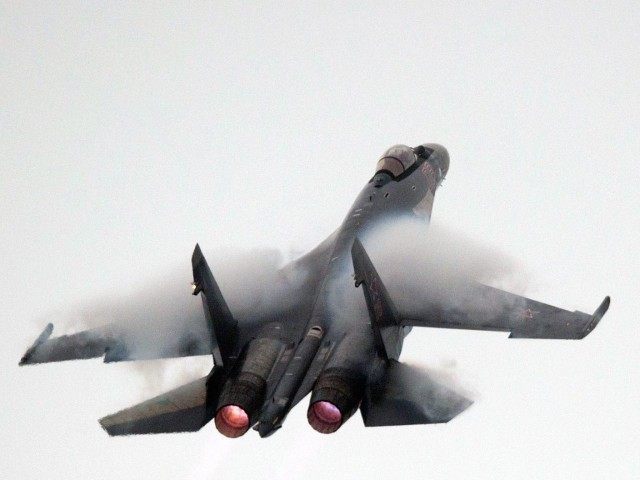China gave Russia’s defense industry a huge boost on November 19 by ordering 24 Su-35s, at a cost of $83 million each, to face-off against Lockheed’s $400 million F-35.
Western sanctions stalled the rollout of the highly effective Sukhoi 35 long-range fighter, according to Stratfor Global Intelligence. The plane has the capability of carrying an 18,000-pound weapons load, including an array of guided and unguided missiles and bombs.
The United States’ “fifth generation” Lockheed F-35 Joint Strike Fighter is the most expensive multi-use aircraft ever built. The cost to the nine partner countries–including Australia, Canada, Denmark, Italy, the Netherlands, Norway, Turkey, the United Kingdom and the U.S.–has more than doubled to $1.5 trillion.
Just 24 hours before the Chinese gave the Russians a huge win, Canada’s new Prime Minister Justin Trudeau, elected in a landslide in a Liberal Party landslide last month, dumped his nation’s commitment to buy 65 F-35 Lightning II fighters for $391.1 billion.
Canada’s shocking withdrawal follows a leaked report to David Axe of the highly respected “War is Boring” blog about the results of a January 14, 2015 U.S. Air Force sponsored head-to-head dogfight at the Sea Test Range over the Pacific Ocean between a single-seat F-35A with no weapons load designated “AF-02” and an aging two-seat F-16D Block 40 hauling two bulky underwing drop tanks that should have put the F-16 at an aerodynamic disadvantage.
Axe reported the 25 year-old F-16 quickly “splashed” the F-35 in mock air-to-air combat. The uncompetitiveness of the supposedly “dominant” F-35 was all the more shocking given that Air Force Chief of Staff General Mark Welsh explained in December of 2013 that “You have to have the F-35 to augment the F-22 to do the air superiority fight.” Essentially, the USAF strategic planners had sourced the F-35 to be America’s ultimate dogfighter.
The F-35 test pilot, in a scathing five-page brief leaked to Axe, complained: “The F-35 was at a distinct energy disadvantage.” He added that it “can’t turn or climb fast enough to hit an enemy plane during a dogfight or to dodge the enemy.”
Unlike the Lockheed F-22 Raptor, which combines a stealthy airframe with a high altitude ceiling and supersonic cruise speeds in excess of Mach 1.8, the F-35 can barely reach Mach 1.6 in full afterburner. Furthermore, the F-35 cannot match the F-22’s angle-of-attack maneuverability for close-in visual-range dogfights.
With defense accounting for about 25 percent of Russian manufacturing, the nation built the first 36 Su-35 for their own air force and then began negotiations in 2011 with the Chinese to be their first export partner. But negotiations stalled over China’s insistence that the planes be built in Chinese factories, which Russia saw as a technology transfer.
Western sanctions in response to Russia’s annexing of the Crimea terminated all export negotiations. But China seems to have agreed to the $2 billion purchase of Su-35s built in entirely in Russia as retaliation for the Obama Administration bragging that it sent two B-52 bombers over the China-built islands in South China Sea.
Following the bombing of a Russian-bound airliner and last week’s Paris terrorist attack, Moscow submitted a draft resolution on November 19 to the U.N. Security Council to combat the Islamic State by coordinating all military action against the terrorist group with President Bashar al-Assad and the government in Syria.
Despite the United Kingdom rejecting a similar resolution two weeks ago, Russia’s U.N. talks for a solution on Syria are now making significant progress due to new support from a revenge-minded France, according to Stratfor.
The growing support within many Western nations to support Russian involvement in fighting ISIS signals the death knell for the sanctions regime that stymied the Su-35. Russian talks with the United Arab Emirates and Pakistan have also accelerated for potential sales of Su-35s.

COMMENTS
Please let us know if you're having issues with commenting.